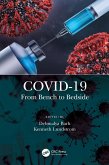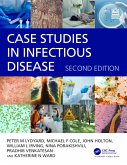In May 1993, a cluster of cases of a lethal disease among healthy young people brought the attention of the world to the southwestern deserts. A previously unknown disease was killing up to 80% of the people it infected.
The reaction in the area and across the nation mixed fear, lack of information, and the struggles of doctors to save the victims of an unknown killer with hard science and the age old rhythmns of the desert. What came out was the story of a virus that had been killing since man arrived in the American continents, Hantavirus, with deadly relatives across the Americas and across the world. This book explains why and how the virus kills, and why it is still killing today. Why all of the science aimed at a virus identified back in 1993 has not brought a vaccine or a cure is part of the story, as is how that killer virus fits into the story of "new" diseases across the world.
The story of hantavirus disease, what has happened since that first outbreak, and what the real risks are is laid out by an experienced scientist and an award winning journalist living and working in the area of the 1993 outbreak.
The reaction in the area and across the nation mixed fear, lack of information, and the struggles of doctors to save the victims of an unknown killer with hard science and the age old rhythmns of the desert. What came out was the story of a virus that had been killing since man arrived in the American continents, Hantavirus, with deadly relatives across the Americas and across the world. This book explains why and how the virus kills, and why it is still killing today. Why all of the science aimed at a virus identified back in 1993 has not brought a vaccine or a cure is part of the story, as is how that killer virus fits into the story of "new" diseases across the world.
The story of hantavirus disease, what has happened since that first outbreak, and what the real risks are is laid out by an experienced scientist and an award winning journalist living and working in the area of the 1993 outbreak.
- Covers the full story of the recent hantavirus outbreak
- Includes interviews with survivors, and local reaction
- Presents the science in lay terms
- Places the event in the broader context of emerging diseases worldwide
- The only account which takes the reader beyond the initial outbreak in 1993-1994, bringing them up to late 1998
- Discusses hantavirus disease in the U.S., Argentina, and Canada
Dieser Download kann aus rechtlichen Gründen nur mit Rechnungsadresse in A, B, BG, CY, CZ, D, DK, EW, E, FIN, F, GR, HR, H, IRL, I, LT, L, LR, M, NL, PL, P, R, S, SLO, SK ausgeliefert werden.
"...In their clearly written book, Of Mice, Men, and Microbes: Hantavirus, Harper and Meyer examine the history of identification of hantaviruses and describe the pathogenesis of the illnesses they cause and their worldwide influence... Readers will finish the book realizing that no infections are new; it is only our recognition of the causes that is new. Readers will also realize that disease and epidemics follow chance encounters among men, mice and associated microbes. Despite their focus on hantaviruses, the authors take readers on a journey to understand the origin and biology of viruses, the coevolution of viruses and their hosts, and humans' fear of new outbreaks and their eventual conquest with new knowledge... anyone interested in hantaviruses will find that this book tells a very complete story. The host, agent, vector, geography,climate, psychology, and cultural responses of the people who are infected are all described. There is much to learn." --Richard Wenzel, M.D., in NEW ENGLAND JOURNAL OF MEDICINE, 2000
"An essential book of those interested in emerging diseases." --P.C. Radich, University of Indianapolis, in CHOICE, 2000
"The authors, one a scientist, the other a journalist, have produced an excellent read for the expert and non-expert alike." --R.C. Spencer in JOURNAL OF ANTIMICROBIAL CHEMOTHERAPY, 1999
"An essential book of those interested in emerging diseases." --P.C. Radich, University of Indianapolis, in CHOICE, 2000
"The authors, one a scientist, the other a journalist, have produced an excellent read for the expert and non-expert alike." --R.C. Spencer in JOURNAL OF ANTIMICROBIAL CHEMOTHERAPY, 1999









